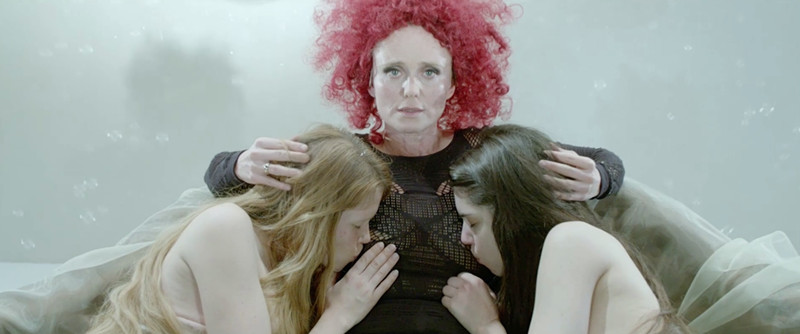
The second batch of 25 lesser known films from the 21st century starts in Heaven and ends in the ruins of Fukushima. On this wild cinematic journey, you’ll encounter the mermaids and dirty saints, feel the soft breath of wind, dance with Melancholia and have the longest stay in Japan where you’ll dream for ten nights…
1. The Discovery of Heaven (Jeroen Krabbé, 2001) / UK | Netherlands
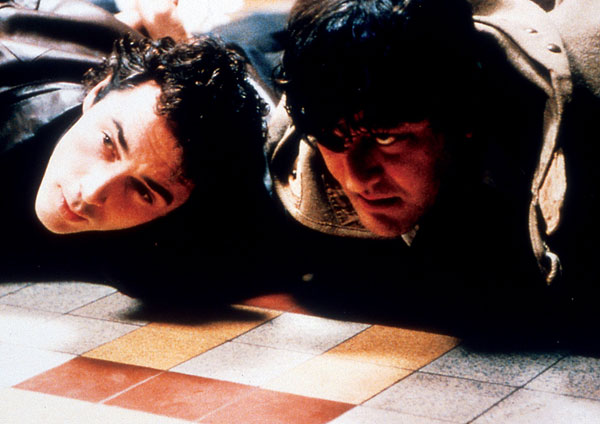
A sophomore (and the last) directorial effort for actor Jeroen Krabbé (who also appears as the angel Gabriel) is the adaptation of Harry Mulisch’s novel of the same name, starring the British comedian Stephen Fry, as requested by the original author. Its plot involves the disappointed God, a strange love triangle and an angel who allegedly caused both world wars while acting as a matchmaker.
Of course, we don’t get to see the Most High, only his servants (who sport no wings and wear black, not white) and a piece of Heaven rendered as a gloomy city of gothic buildings connected by many stairs and overflown by crows and ravens. When the action moves to Earth, we are introduced to the protagonists who are easy to empathize with and whose relationship develops spontaneously, in spite of the divine intervention.
What Krabbé achieves here could be described as an intriguing mélange of a metaphysical fantasy and witty drama with religion, science, politics, history and philosophy intertwining in a leisurely pace and in a non-preachy way.
2. At the First Breath of Wind (Franco Piavoli, 2002) / Italy
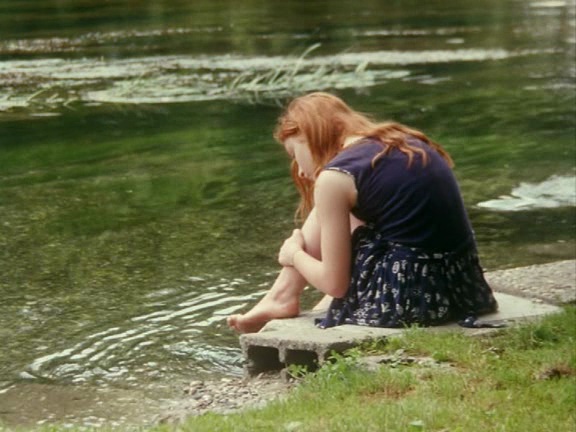
The spiritual sequel to a lyrical documentary “Voices in Time (Voci nel tempo)”, a hypnotic drama “At the First Breath of Wind (Al primo soffio di vento)” takes the viewer away from the urban jungle to a serene country estate somewhere in Lombardy.
Similarly to the Lithuanian director Šarūnas Bartas, Franco Piavoli doesn’t speak in words, but in enchanting images which he complements with ambient noise and melancholic compositions by Erik Satie. Pointing to his characters’ loss of communication skills, he replaces most of the dialogue with the intoxicating silence and whispers of the idyllic rural setting.
Painted with precise and gentle brush strokes, his lavish, contemplative, non-narrative canvases are the portraits of stupor, sorrow, fatigue, yearning, absence, infatuation and/or disorientation – yet, his “models” are not entirely hopeless, unlike Bartas’s protagonists. Alone in togetherness, they are just too consumed by nostalgia and lost in the exploration of their inner worlds…
3. Rhinoceros Eyes (Aaron Woodley, 2003) / USA
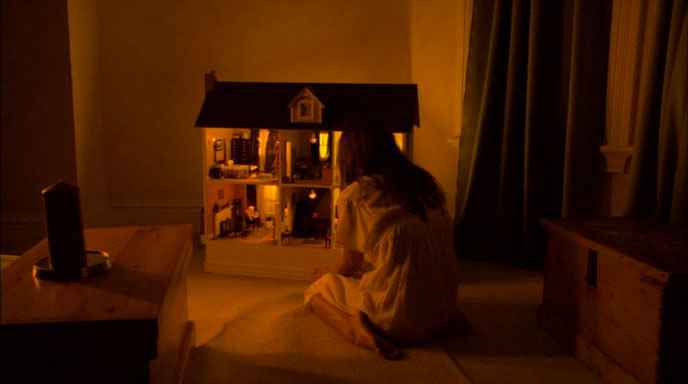
Chep (Michael Pitt) is a young man who lives and works in a prop-house and falls in love with Fran (Paige Turco) – an attractive, detail-obsessed production designer. In order to win her heart, Chep will try to satisfy her every request at all costs.
And it’s for the best you find out yourself how a Tor Johnson mask, a cinephile detective, a doll house, four gorillas, hybrid little creatures and a naked exhibitionist fit into their romantic fantasy. As the previous sentence suggests, “Rhinoceros Eyes” – a zany feature debut for D. Cronenberg’s nephew – is one of those films that seem like they were made after a long pot session.
It is not easy to make heads or tails out of it, yet there’s something irresistible in its quirks and particularities, dense ‘Donnie Darko-esque’ atmosphere and the stop-motion bizarreness in the vein of the Quay brothers – all sprinkled with a handful of magic dust.
4. After the Apocalypse (Yasuaki Nakajima, 2004) / USA
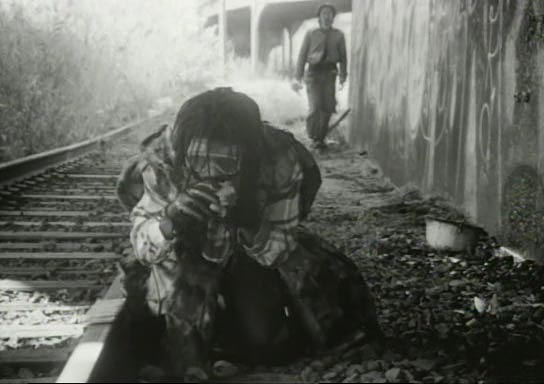
The second feature debut on this list revolves around a quintet of the Third World War survivors who are forced to communicate nonverbally, since they lost their speech ability. Guided by primal instincts, surrounded by poisonous air and unable to socialize or act on their own, these postmodern Cro-Magnons are basically doomed.
The gestures, facial expressions, gasping, hissing, growling and squealing which completely replace the dialogue define not only the characters, but their emotions and relations as well, whereby the whimsical sound design and the ambient score are utilized as supplements. And the dreariness of the desolated urban environment is beautifully captured in B&W photography.
A central motif in this futuristic view of humanity’s death and (pathetic) rebirth is water. At the beginning, it lures the main protagonist (played by Nakajima himself) out of his shelter, it serves as the only source of food and it is the means of spiritual cleansing. In the epilogue, the soothing sound of waves muffles the newborn’s cry – a symbol of hope.
5. Nitaboh, the Shamisen Master (Akio Nishizawa, 2004) / Japan
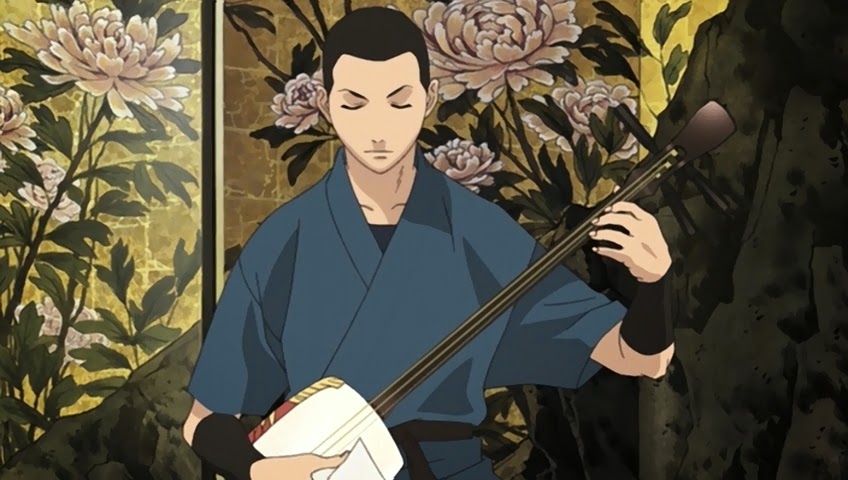
A belated, yet remarkable directorial debut for the producer Akio Nishizawa is an award-winning historical drama set in the Meiji era and adopted from Kazuo Daijō’s novel. Its story revolves around a young man, Nitaro, who loses his eyesight at the age of eight and later becomes the creator of Tsugaru-shamisen style, through many tribulations and by virtue of his perseverance.
In portraying Nitaro’s zeal and the vanity of his competitors, Nishizawa demonstrates a keen sense of humanity and characterization, as well as the clarity of expression. Simultaneously, he represents the Japanese society of the time – class distinctions, the extent of Western influence and the clash between the modern and the traditional – whereby he achieves a perfect balance of form and style.
Intoxicating, touching, mystical and ethereal melodies of a “three-stringed guitar” are performed by the shamisen virtuoso Hiromitsu Agatsuma, so “Nitaboh” is the anime that should not only be seen, but intently listened to as well. Its soundscapes establish a Zen-like atmosphere complemented by the calming imagery of the semi-realistic character design and beautifully painted backgrounds.
6. EGG. (Yukihiko Tsutsumi, 2005) / Japan
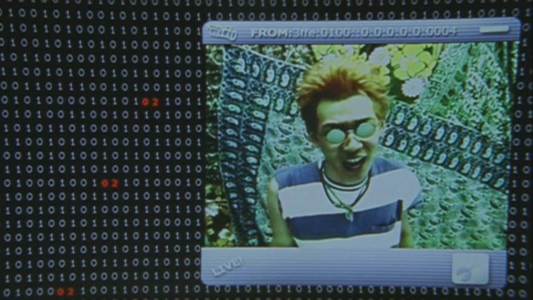
Whenever she closes her eyes, Tsukiko Arai sees a blue egg on a water-covered surface, under crimson skies. She’s not worried by this dream/hallucination, until the egg cracks and a disgusting little creature hatches. To make matters worse, she can get no help from her childish friends, dullish cops, a quasi-mute neighbor and a shrink who’s crazier than his patients…
EGG. is a “braid” of horror, comedy and mystery which threatens to “unplait” now and then, while balancing between art and fun, levity and severity. However, if you can forgive its minor flaws and caricatured characters (Tsukiko being an exception), “EGG.” will impress you, especially once the surreal scenes become longer than a few blinks.
What makes this omelet even tastier is the ambiguity of the heroine’s disturbing (and hereditary) visions. They could be viewed as a metaphor for the fear of motherhood, an abstract manifestation of a suppressed (childhood) memory, a weird effect of a monotonous job and so forth.
7. The PianoTuner of EarthQuakes (Stephen & Timothy Quay, 2005) / Germany | UK | France
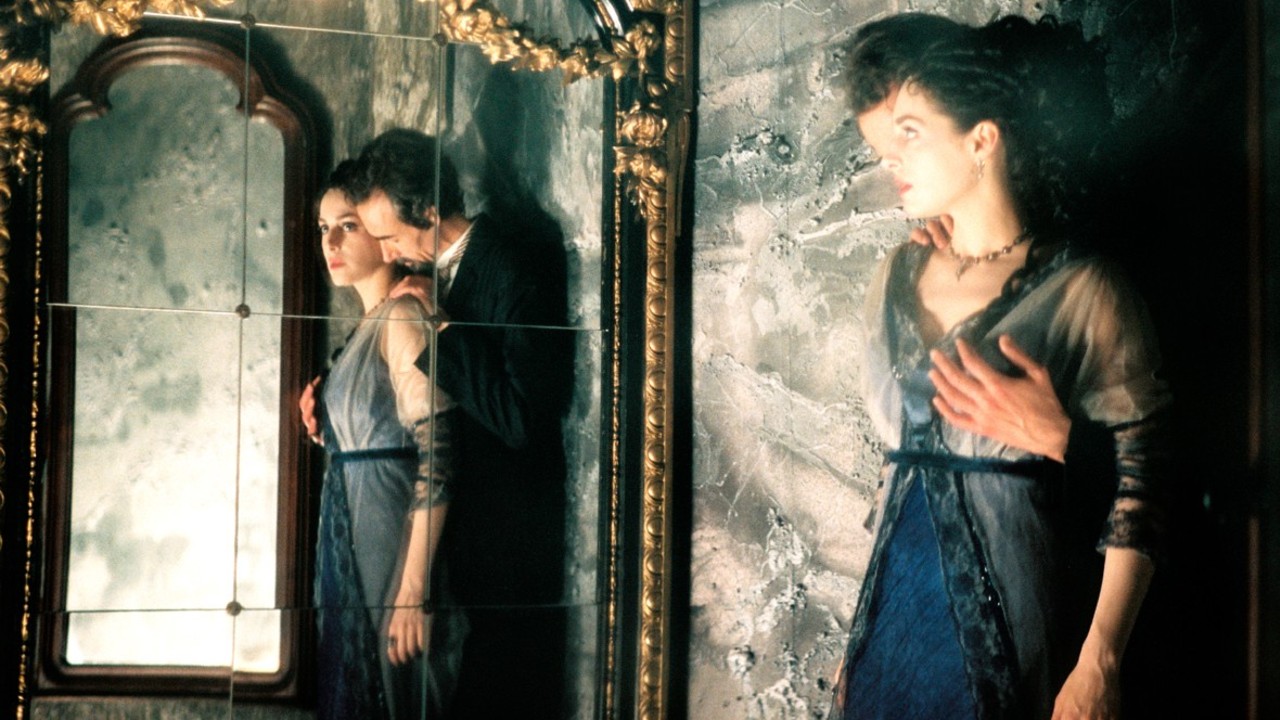
‘Zemljotres’ is a Serbian word for ‘earthquake’ and it is shouted loudly and clearly by one of the gardener-characters of the film – certainly the one who is played by Ljubiša Lupo-Grujčić. And the aesthetical earthquake caused by this Quays masterpiece is of a silent, yet “devastating” kind.
It is a dark, poetic, surreal and metaphorical fairy tale of a beautiful opera singer who’s, on the eve of her wedding, killed, abducted and resurrected by a diabolical doctor with the intention of keeping her as a nightingale in a mechanical cage. (A pretty unique declaration of love.)
Punctuated by peculiar stop-motion sequences and gorgeously shot by Nic Knowland (who recently collaborated with Peter Strickland on “Berberian Sound Studio” and “The Duke of Burgundy”), “The PianoTuner…” operates on dream logic. In the words of the antagonist, it could be described as “the most rational irrationality” with a soft, melancholic heart.
8. Jasminum (Jan Jakub Kolski, 2006) / Poland
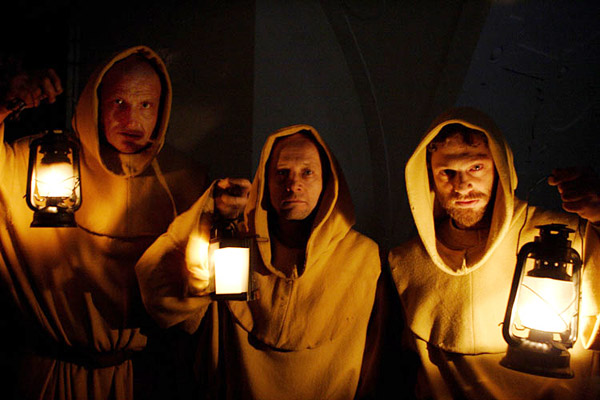
Set in the fictitious town of Jasminovo, a slightly weird story revolves around the group of strange monks whose peaceful world is invaded by a monument restorer and an amateur perfumer, Natasza, and her daughter Eugenia who is the film’s inexperienced, yet objective narrator.
Exploring the relation of the rational (science/chemistry) to the mystical (religion/prayer), as well as the themes of humaneness, commitment and saintliness, the Polish master of magic realism spins a breezy and aromatic fairy tale for the adults or rather, an unconventional romantic dramedy.
His brilliantly conceived, well acted and, above all, lovable characters (in particular, Eugenia and Zdrówko who cares about the monastery estate) invite the viewer’s empathy and imagination, while passing down simple, yet sublime messages.
Spiced with a carefully weighed dose of mystery and deadpan humor, “Jasminum” delights with a relaxing, contemplative atmosphere established via the delicate soundtrack and the warm, modestly beautiful cinematography dominated by yellows. Also memorable are the locations – the Silesian town of Głogów and the Niemodlin castle.